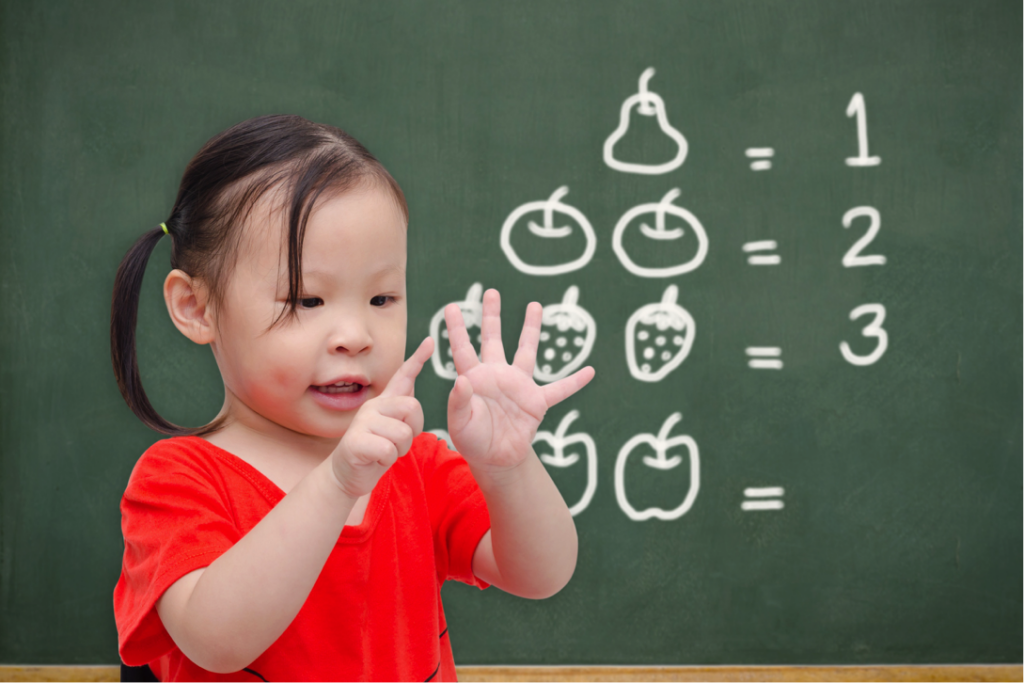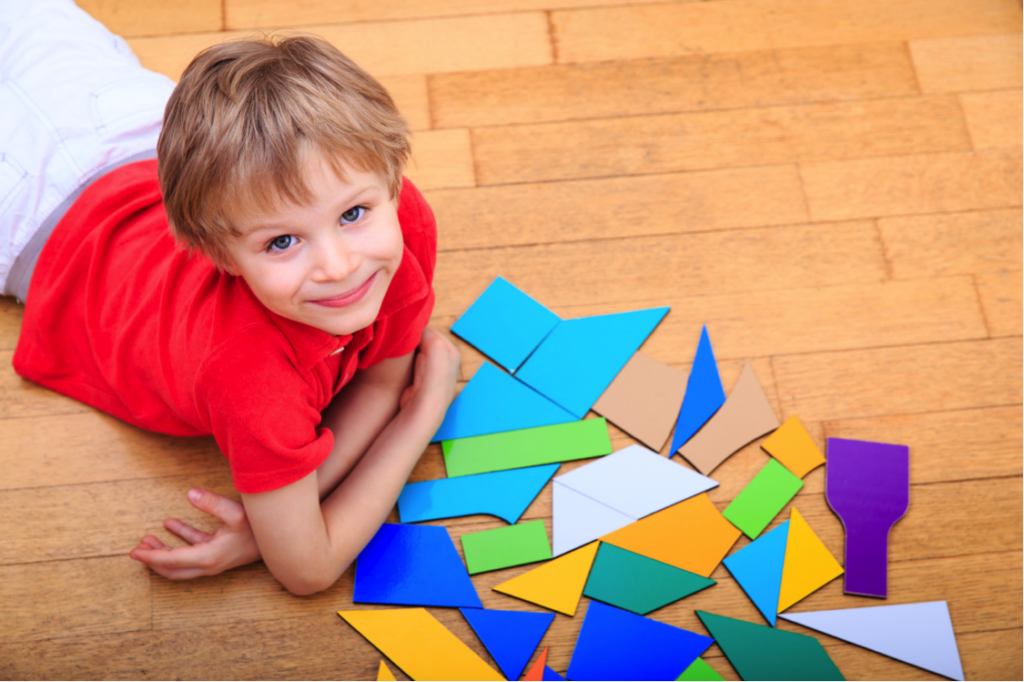Did you know that children actually come into the world “pre-wired” for math?
The little years are the very best window for introducing simple math ideas to young minds. These summer weeks leading up to kindergarten are a perfect time to blend math skills and conversations into everyday life. Best of all, we want to show you how to make it fun for you and your child!
Here are 6 simple ways to help your rising kindergartener get ready for math:
1. Count
Whether a child is only a year old or five years old, children love to count! Everyday life is full of counting opportunities:
– Count in the car.
– Count while your child is brushing her teeth.
– Count the toys as you clean up.
– Count groups of things, like grapes or bananas, allowing them to see and touch objects while they’re counting.
– Count up to 10, then work up to 20, and beyond. Children love seeing how far they can go!
2. Make groups.
Children can count and recognize numbers before they understand what numbers mean. You want them to learn that “ten” isn’t simply a word that comes after “nine;” ten represents ten of something.

Have your child count everyday items and put them into a group.
– Count 10 pennies and put them in a pile.
– Make a group of 7 beans.
– Make a stack of your 5 favorite books.
– Choose 3 of your favorite stuffed animals to sleep with you.
– Put 4 plates on the table.
As your child begins to associate real objects with numbers, math becomes a meaningful part of daily life.
3. Keep math fun!
Adults tend to think of math in terms of workbooks, homework, and timed tests. But the early years are about building a healthy brain that’s ready for simple math concepts and problem-solving. No pencils and worksheets required!
– Have a dance party and count to the beat of the music.
– Let them use everyday household items as “manipulatives.” Manipulatives is just a fancy word for objects you can use as counters. Buttons, dried pasta and beans, coins, Legos, candy, and Cheerios can all be used to count and group. (Click here for more great ideas!)
– Play board games and card games. Candy Land, Chutes and Ladders, and Uno are all fun and simple games that teach math and so much more.
When you make math fun, your child develops a positive attitude toward learning because of the enjoyable experiences they have with numbers!
4. See shapes everywhere.
Shapes are everywhere! Once you teach your child to find shapes in the world around them, they’ll have fun finding them wherever they go.

– Find shapes as you’re driving. (houses, buildings, and road signs)
– Find shapes at mealtime. (sandwiches, crackers, cookies, juice boxes, and cutting fruits and veggies into shapes)
– Find shapes as you read picture books together.
– Find shapes in grocery stores, waiting rooms, and at the park.
5. Matching and Sorting
Whether they’re playing with toys or helping around the house, children can sort by shape, color, and size every single day.
– Sort items from smallest to biggest.
– Sort items into groups of five and ten.
– Let your child help sort laundry by person, color, or the type of clothing.
– Using everyday items, ask which one is bigger, heavier, shortest, longest, smallest. Ask which item is first, last, middle, third, etc. (For example, line up three cars and ask children which car is the first, second, and third car in line.)
6. Make math part of everyday life.
Hopefully you’re beginning to see that early learning doesn’t need to be an extra task to add to your busy day. You prepare young children for school in the same way you prepare them for life, by using the simple rhythms of your home and everyday world as teachable moments.

– As you walk from one place to another: “Let’s see how many steps from our apartment to the mailbox. Or “Let’s count and skip while we walk to the car.”
– Use mealtime at math-time: “How many chicken nuggets are on your plate? That’s right, 5! Now, eat 2 of those nuggets. How many nuggets are left?”
– At the grocery store: “Can you choose 5 red apples and put them in the bag?”
– As you’re driving, you can have your child look for objects to count: “Let’s see if we can find 4 green cars on our way to school.” Or “Tell me what numbers you see on signs.”
– At home: “Will you get your baby sister 2 of her favorite toys?” Or “How many buttons are on your shirt?”
– To see simple math ideas in action, watch this short video from The Palmetto Basics. It shows how real parents and caregivers are making math part of everyday life for their young children.
Learning opportunities are all around you. As you make simple math skills and conversations part of your daily routine, you’re not only getting your child ready for school, you’re getting them ready for life!
This is the seventh of 8 posts this summer that will help your child get ready for kindergarten. Thanks for sharing with other parents and caregivers of rising kindergartners who may benefit!
You’ll also enjoy the other posts in this series:
6 Ways to Help Your Child FEEL Ready for Kindergarten (week 1)
5 Simple Ways to Turn Everyday Moments into Learning Opportunities for Kindergarten (week 2)
5 Simple Ways YOU Can Help Your Kindergartener Learn to Love Books (week 3)
3 Simple Ways to Work on Independence and Responsibility at Home (week 4)
How to Create a Kindergarten Learning Station in Your Home (in less than 5 minutes!) (week 5)
Why playtime matters for kindergarten + 12 everyday ideas for summer! (week 6)
Originally posted by First Steps South Carolina. Republished by First Steps Pickens County with permission.

